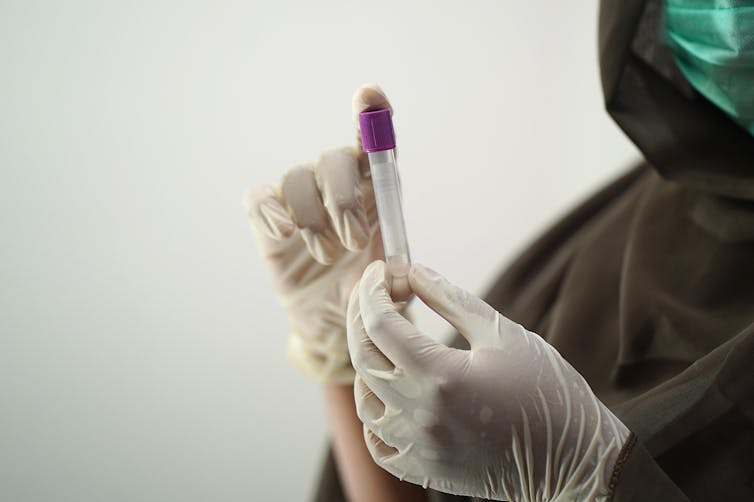
If there’s a disease that seems to run in your family, if you’ve had a negative reaction to a drug or wondered why a standard treatment didn’t work on you, the answers may lie in your genes.
The unique sequence of DNA that acts as a blueprint for building and maintaining your body often plays a major role in shaping your predisposition to diseases and reactions to drugs.
Genes in the DNA make proteins, which can act as biomarkers or influence other types of biomarkers. Biomarkers are molecules in the body that help measure health conditions, such as those detected in blood or urine tests.
Blood glucose, for example, is a biomarker for diabetes, cholesterol levels can be biomarkers for heart diseases and albumin is a protein used to assess kidney and liver functions.
Tailoring treatments
By understanding a patient’s unique genetic profile, biomarker readings and lifestyle information, doctors could tailor the most effective and safest treatments for that individual.
Genetics offer the opportunity for individualized health care that can improve patient outcomes, save lives and alleviate strain on the health-care system.
This is the promise of personalized medicine, which is already making a difference in areas such as cardiovascular diseases, cancer, mental health and rare diseases.
The question is, are we prepared to seize this golden opportunity in Canada?
Genetic testing and data
Canadians are not averse to genetic testing. By 2018, a survey by Abacus Data showed around 11 per cent of Canadian adults had used direct-to-consumer genetic testing and analysis kits, and 60 per cent were open to ordering a test.
This level of interest highlights a general acceptance of and readiness for genetic advancements in health care, which is encouraging, since we need much more reliable, population-level genetic information to make the most of this opportunity.
Current genetic data is either scattered across relatively small, fragmented groups, which is severely limiting from a broader research perspective, or held by private companies. These companies have varying regulatory standards, raising concerns about privacy and data security, especially if a company is financially unstable or ceases to exist. This recently occurred when genetic testing company 23andMe filed for bankruptcy.
Read more: With 23andMe filing for bankruptcy, what happens to consumers' genetic data?
The better model is publicly managed biobanks, which prioritize broad societal health over profit and offer stronger data protection through robust regulation of access, storage and usage. Strict oversight ensures the protection of individual privacy while promoting transparency.
The potential of biobanks
In this age of big data, biobanks have become some of the most transformative tools in medical research, enabling scientists to study the relationships between genes, health and disease on an unprecedented scale.
This is possible because of technological advancements that allow large-scale genetic and biomarker testing, the adoption of cloud-based servers, and improvements in statistical modelling, machine learning and artificial intelligence.
Establishing a biobank begins with collecting small amounts (five to 10 millilitres) of blood, saliva or tissue from consenting participants in the presence of health experts.
Biobanks use next-generation sequencers to perform the genetic sequences at high speed, while the latest proteomics platforms enable measurement of thousands different biomarkers from a very small amount of blood. The resulting genetic and biomarker profiles are curated and made accessible through platforms like a national library.
Countries such as the United Kingdom and the United States are paving the way with national efforts such as the UK Biobank and the All of Us Research Program.
The British Biobank houses genetic and health data from more than 500,000 participants. Similarly, the U.S. program aims to enrol more than one million participants.
Genomics in Canada
As a genetic epidemiologist, I have had the opportunity to identify several potential genetic targets by using these treasure troves of information.
The problem is that we don’t yet have a ready way of knowing if the results are directly applicable to the Canadian population.
This is about to change. Genome Canada has launched the Canadian Precision Health Initiative to sequence the genomes of at least 100,000 Canadians.

A Pan-Canadian Genome Library (PCGL) is also in the works to harmonize genetic data produced across Canada. It aims to capture, store and provide access to Canadian genomic data in a secure and ethical manner. Although this work is in the developmental phase, and the target population size remains unclear, these efforts are significant.
These visions are closer to becoming a reality with the recent announcement of a $200 million investment in the Canadian Precision Health initiative. This is in addition to the more than $1 billion previously invested in health genomics research projects.
These funds will support Canada’s Genomic centres, the PCGL, and enhance the translation of genomics into real-world applications, boosting the development of personalized medicine and advanced diagnostics to treat diseases.
A potential model for the world
Canada, with its uniquely diverse population, has a rare opportunity to lead the way in equitable, multi-ethnic genetic research that would address current biases that predominantly focus on individuals with European ancestry.
This would ensure that everyone in Canada, including Indigenous communities, can benefit from this health-care revolution in an equitable, ethical and safe manner that balances privacy with the opportunities for groundbreaking research.
With public trust and robust oversight, and making population-level data internationally accessible, Canada’s biobank initiative could become a model for the world in the golden era of personalized medicine.
Nazia Pathan, PhD does not work for, consult, own shares in or receive funding from any company or organisation that would benefit from this article, and has disclosed no relevant affiliations beyond their academic appointment.
This article was originally published on The Conversation. Read the original article.







